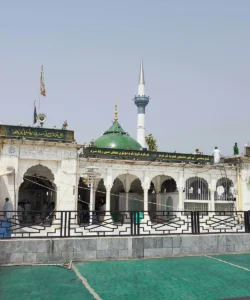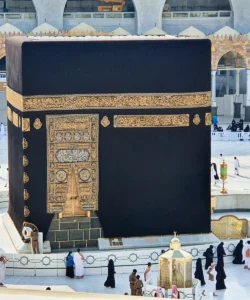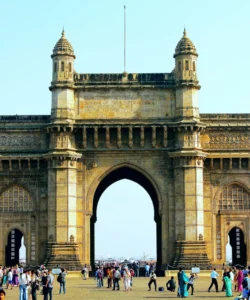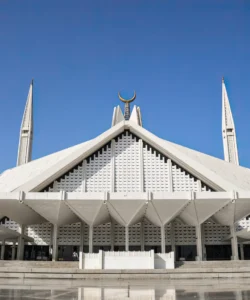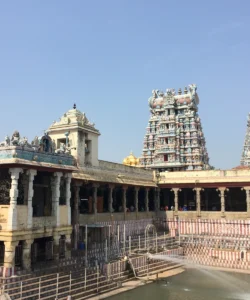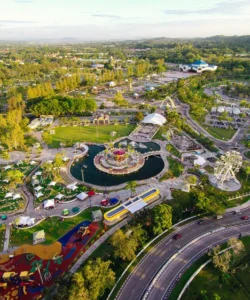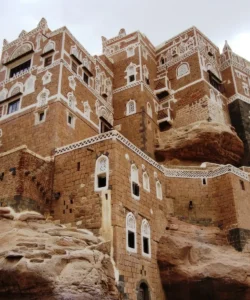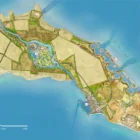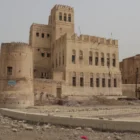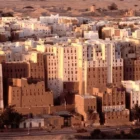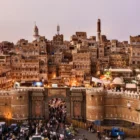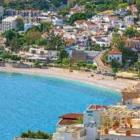The Sheikh Abdullah Al Salem Cultural Centre (ASCC) is a monumental cultural complex located in Kuwait City, inaugurated in early 2018. Owned by the Amiri Diwan, it stands as one of the world’s largest museum complexes, designed to celebrate human scientific and cultural achievements across various fields. It offers an immersive and educational experience for visitors of all ages, showcasing a blend of Kuwaiti, Islamic, Arab, and global heritage.
Listen to an introduction about Sheikh Abdullah Al Salem Cultural Centre
Name and Address
- Name: Sheikh Abdullah Al Salem Cultural Centre (Arabic: مركز الشيخ عبدالله السالم الثقافي)
- Address: 22065, Baghdad St, Salmiya, Kuwait City, Kuwait. It’s located in the Al-Sha’ab area on the western shore of Kuwait.
How to Get There
The Sheikh Abdullah Al Salem Cultural Centre is situated in Salmiya, a well-known district in Kuwait City, making it easily accessible.
- By Car/Taxi: Taxis and ride-sharing services are readily available throughout Kuwait City. Simply tell the driver “Sheikh Abdullah Al Salem Cultural Centre in Salmiya.” There is ample parking available on-site, though fees may apply.
- By Public Bus: Several public bus routes serve the Salmiya area with stops on Baghdad Street, a short walk from the Centre.
- On-Site: The Centre is generally open from Sunday to Thursday, 9:00 AM to 7:00 PM, and on Fridays from 3:00 PM to 10:00 PM (check for specific museum hours within the complex). It is closed on Tuesdays. It’s advisable to check their official website for the latest opening hours and ticket prices, as these can vary. Wear comfortable shoes as the complex is extensive and requires a lot of walking.
Landscape and Architecture
The architecture of the Sheikh Abdullah Al Salem Cultural Centre is a modern marvel, designed by Kuwaiti architects SSH, with a focus on creating an immersive and awe-inspiring experience.
- Vast Complex: Spanning an 18-hectare (approximately 44-acre) site, ASCC comprises eight buildings, including six world-class museums, a conference hall, and a documents facility. These buildings house 22 display halls with over 1,000 pieces of relics and unique items.
- Interconnected Design: The buildings are connected through glazed wings and a central canopy, creating a covered “street” that meanders and echoes the traditional Kuwaiti “Ferej” (alleyway). This design allows visitors to explore the complex while being shaded and partially climatically controlled.
- Museums within the Centre:
- Natural History Museum: Features galleries on Prehistoric Life, Ecosystems (including a 1.4 million-liter aquarium with a walkthrough tunnel and a South East Asian rainforest), Earth and Environment, Biodiversity, and Arabian Wildlife.
- Science Museum: Includes galleries on Human Body & Mind, Health & Medicine, and Technology & Transport (showcasing over 200 historical and contemporary vehicles, including full-scale planes and cars suspended from the roof).
- Space Museum: Explores topics from the Big Bang to space travel, featuring a 110-seat planetarium and an immersive, full-size replica of the International Space Station (ISS).
- Arabic Islamic Science Museum: Dedicated to the influences of Arabic scholars and inventors, exploring the flourishing of Islamic civilization’s arts and sciences from the 8th to 14th centuries. It includes interactive displays on key inventions.
- Fine Arts Centre: Showcases art exhibitions and supports artists through an artist-in-residency program.
- Theatre: Hosts various performances and events.
- Materials and Aesthetics: The exterior cladding and roof paving utilize high-quality Turkish marble. The design incorporates Islamic patterns, corners, and walkways, mirroring traditional Kuwaiti urban experiences. The large solar shade canopy features 2,000 LED-lit shingles for evening light shows and daytime shade.
What Makes It Famous
- World’s Largest Museum Complex (Single-Delivery): ASCC was the world’s largest single-delivery museum project upon its inauguration, making it a globally significant cultural landmark.
- Diverse and Comprehensive Collections: Its fame stems from its extensive and diverse range of interactive exhibits covering natural history, science, space, Islamic science, and fine arts, appealing to a wide audience.
- Immersive Experiences: Features like the full-size ISS replica, the rainforest aquarium, and interactive science displays provide highly immersive and engaging learning experiences.
- Celebration of Human Achievement: The Centre’s mission to celebrate scientific and cultural achievements of mankind, blending Kuwaiti, Islamic, Arab, and global perspectives, makes it a unique educational destination.
- Architectural Excellence: Its award-winning design, which skillfully integrates multiple museums with a central “street” and innovative shading solutions, is a testament to modern architectural prowess.
Differences from Some Other Attractions
- Comprehensive Cultural District: Unlike individual museums (like the Kuwait National Museum with its broader national heritage focus or the Tareq Rajab Museum with its specialized Islamic art collection) or single-purpose attractions (like the Kuwait Towers), ASCC is a vast, integrated cultural complex housing multiple distinct museums and facilities under one umbrella.
- Modern Interactive Learning: While other attractions might offer historical displays, ASCC places a strong emphasis on modern, interactive, and immersive exhibits across diverse scientific and cultural fields, making learning highly engaging for contemporary audiences.
- Global and Local Scope: It uniquely combines the celebration of Kuwaiti, Islamic, and Arab heritage with a broad showcase of global scientific and cultural achievements, offering a wider scope than many regionally focused museums.
- Purpose-Built for Scale: Designed and built as a massive, world-class cultural project from the ground up, its scale and integration of diverse themes are a distinguishing feature compared to older, organically grown cultural institutions.
Sheikh Abdullah Al Salem Cultural Centre Photos:
































